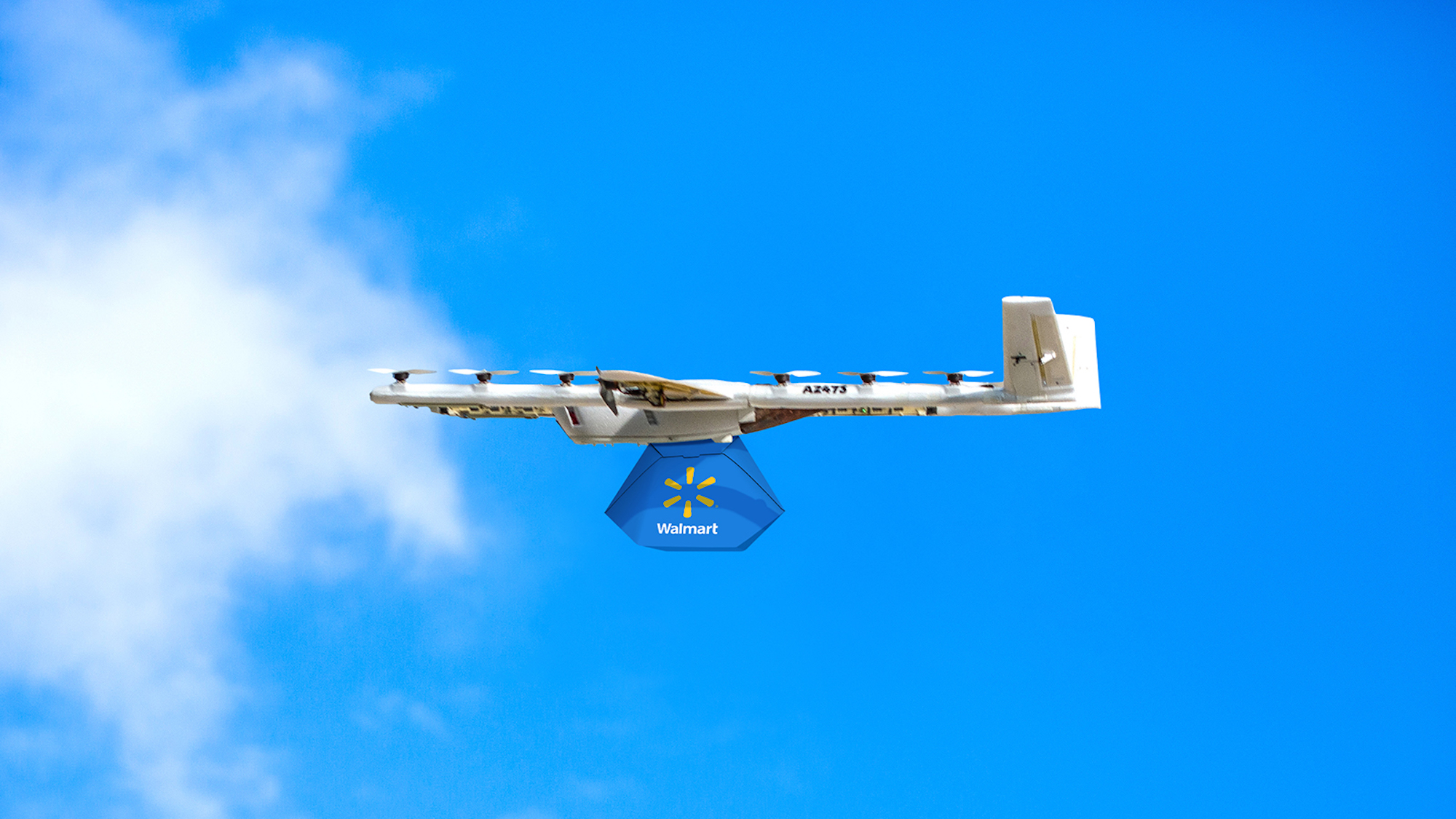

Wing, Google-parent company Alphabet’s drone-delivery subsidiary, has just announced a new partnership with Walmart in the Dallas-Fort Worth metro area. Over the coming month, the drone-delivery service will start operating from two Walmart Supercenters reaching approximately 60,000 homes. According to Walmart’s corresponding announcement post, using Wing’s app, “customers will be able to order items like frozen treats (when those ice cream cravings hit), household essentials, last-minute meal solutions like macaroni and cheese, and even fragile items like eggs.”
And delivery will be fast. Wing is aiming to complete deliveries in under 30 minutes. To achieve that, its drones can fly at speeds of up to 65 mph and have a six-mile range. Crucially, the FAA allows one pilot to oversee multiple drones—all of which can be beyond visual range. As Shannon Nash, Wing’s chief financial officer writes in the announcement, “Wing’s technology allows operators to oversee the system from a remote location, which means pilots won’t need to be stationed at stores or customer homes. The aircraft essentially fly themselves, so each operator is approved to safely oversee many drones at the same time.” According to Bloomberg, though, Wing still has to have a spotter on the ground who keeps an eye out for small aircraft that aren’t capable of broadcasting their location.
While all this is impressive, you won’t be able to use Wing to satisfy any midnight cravings. The service will operate between 10:30am and 6:30pm every day except Wednesday.
[Related: Watch a Google drone deliver beer and snacks to Denver’s Coors Field]
This new partnership with Wing isn’t Walmart’s first foray into drone delivery. Since the company announced it was trialing a drone delivery program in 2021, it has expanded to 36 stores (soon, 38) in seven states and partnered with three different drone delivery startups: DroneUp (which it partly owns), Flytrex, and Zipline. The company already has a network of 11 drone hubs operating in the Dallas metro area.
Despite the relatively large number of trial locations, Walmart’s delivery numbers aren’t especially good. The company claims to have made “more than 10,000 safe deliveries,” which pales in comparison to the more than 330,000 deliveries Wing has pulled off in its test markets across the US, Europe, and Australia. The drone operator has “moved as many as one thousand packages per day in a delivery region of more than 100,000 people.” In fact, one Virginia couple in their 80s received more than 1,200 packages from Wing’s drones, including 371 takeaway meals from a local Mexican restaurant and 210 blueberry muffins from a bakery.
Unfortunately, Wing’s announcement post suggests that it will be operating a drone delivery base at the two Walmart Supercenters, rather than using the AutoLoader system it announced earlier this year. This means that Walmart staff will load each package into a drone that’s waiting outside on a charging pad which will then takeoff, deliver the package to the customer, before returning to its charging pad. With the AutoLoader, the staff member would instead load the package into a crane-like contraption that a passing drone based off-site would collect before delivering it to a customer and. It could also potentially fly to another store to collect a different package. Basically, the Autoloader will allow Wing to operate a ride-sharing like model for drone deliveries called the Wing Delivery Network, instead of relying on each store to operate its own drone base.
Still, it’s a fairly exciting time in the drone delivery space. Wing seems committed to finding a business and operational model that works—at least in large suburbs adjacent to major metro areas. And some of Walmart’s other partners are finding their own successes too. Zipline, which partners with Walmart in Arkansas to deliver packages within a 50 mile radius, has already developed a successful operation delivering medical supplies across long distances in Rwanda, Ghana, and Nigeria.
While there are obviously still plenty of problems to be solved with widely available drone delivery, there appears to be genuine progress. The biggest question right now is where is Amazon? After a flashy announcement almost a decade ago, its Prime Air program has achieved…very little. According to a report from CNBC earlier this year, the retailer had only completed 100 deliveries. Wing is likely to soon be doing those kinds of numbers every day from its new Walmart hubs.
